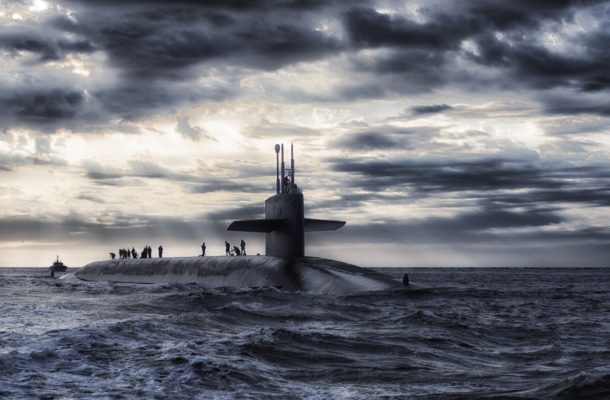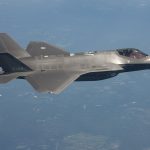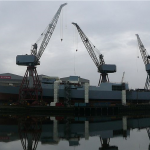Planning for industrial sovereignty

As we approach the second anniversary of the release of the government’s 2016 Defence Industry Policy Statement, perhaps the document’s single most important initiative has yet to emerge: a plan for sovereign industrial capabilities.
Despite the plan’s widely acknowledged importance from national security, defence force development and innovation perspectives, we still have limited insight into its contents or the date of its long-promised release.
As the wait continues, it’s interesting to ponder some of the issues involved. The concept of sovereignty has proven to be slippery and neither the policy statement nor its associated documentation give much away. So, let’s start with some basics.
The policy statement reveals a shift in thinking about industrial capabilities held in‑country ostensibly for military-strategic reasons. The statement doesn’t designate these capabilities as a priority for the defence of the nation.
At least some priority capabilities might be desirable rather than essential to retain within Australian-based companies. And for these capabilities at least, a clear trade-off exists between capability development and the opportunity costs involved. Instead, the statement ‘ups the ante’ by adopting the concept of industrial sovereignty.
To some extent at least, a policy shift from industrial priority to industrial sovereignty represents a move from ‘should have’ to ‘must have’. It results in a considerably narrower definition than industrial self-reliance or self-sufficiency.
All other factors being equal, the shift implies a decline in the proportion of defence industry deemed to be of the highest military-strategic value. However, it also points to a stronger obligation on the part of Defence to pay whatever price premiums are required to maintain the domestic industrial capabilities it needs, should the industry fall short of achieving international competitiveness.
In essence, sovereign industry capabilities are those that help to build or sustain weapons and related defence materiel in Australia, and that satisfy three core criteria:
1. The materiel holds a pivotal position (as a finished product or a component) in the ADF’s order of battle, now or in the foreseeable future.
2. The materiel, whether built in Australia or overseas, is unable to be amassed during periods of relative tranquillity.
3. The materiel is difficult to acquire from overseas, or to be sent abroad to be sustained, in the event of a significant deterioration in Australia’s defence outlook.
These criteria are rooted firmly in the notion of national security rather than nation building (a mainly economic concept) or even national pride.
Due to limited and intermittent domestic demand, these kinds of industry capabilities are often supported by one or a very small number of Australian-based companies that may require government assistance to remain viable.
By virtue of being critical to the defence effort, insulated from direct import competition and supplied from highly concentrated domestic markets with considerable barriers to entry and exit, many of the capabilities could be held by companies with a significant degree of market power.
From all this, there are a number of factors that the forthcoming plan should address. To begin, the document should note the rationale behind each of its capability selection criteria and which of the 12 extant priority industry capabilities (PICs) have been classed as sovereign.
More broadly, the plan should scrutinise recent calls for companies holding sovereign capabilities to be Australian-controlled when Australian defence industry is now overwhelmingly foreign-owned and relies heavily on overseas investment to support its technological development. And the plan should articulate how Defence will ensure that the potentially increasing market power of companies with sovereign status is adequately managed through government profit and cost regulation.
To determine how far government assistance for sovereign capabilities is likely to extend, the plan should include details on two issues. The first is how to ensure greater public transparency in relation to the costs of capability support, including price premiums. The second is what proportion of defence industry is likely to enjoy sovereign status, compared to an estimated 20% of the industry covered by PICs.
In terms of coverage, there has been considerable public debate about whether naval shipbuilding should be included under a sovereignty umbrella. Recent Canadian research provides some interesting insights into the reasoning behind Canada’s naval shipbuilding program. Shipbuilding wasn’t included, in the aggregate, as a PIC—although important individual elements were.
So, if sovereignty is the preferred justification for re-invigorating our naval shipbuilding industry, the plan should explain why vessels the RAN requires are no longer reasonably available from foreign shipyards or must be built in Australia to be adequately sustained in-country.
Finally, the new plan should pay close attention to how Defence implements a new approach given that implementation, rather than design, proved especially challenging in a PIC environment. This obviously requires detailing how Defence will integrate the concept of sovereignty into its broader equipment development and acquisition processes.
But it extends to other factors: delineating how heavily the department should orient its industry assistance programs—for workforce skilling, exporting and innovation—towards sovereignty objectives; describing how Defence proposes to analyse (and update) whether its demand for sovereign capabilities can be matched by industry’s capacity to supply; outlining the relative merits of competing options for government to intervene in the market to deal with capability shortfalls; and, specifying the information about sovereign industry’s ‘health’ that Defence intends to release publicly.
This article originally appeared in The Stategist.
Rob Bourke is an associate with Canberra-based consulting company Cadence Economics and was formerly economic adviser to the Defence Capability Acquisition and Sustainment Group in the Department of Defence, where he worked extensively on the economics of industry capability development.








